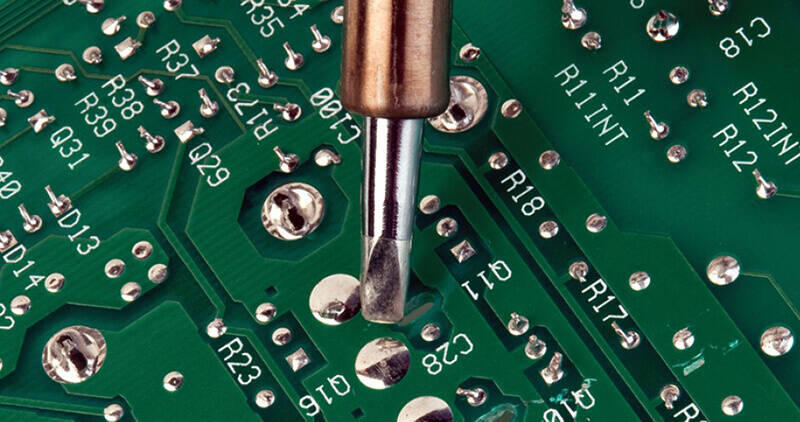About us
FASTPCBA Co.,Ltd
-
 Building 1, Senyang Electronic Technology Park, Guangming High-tech Park, Yutang Street, Guangming District, Shenzhen City.
Building 1, Senyang Electronic Technology Park, Guangming High-tech Park, Yutang Street, Guangming District, Shenzhen City.
-
 F:86-13418481618
F:86-13418481618
-
 pcba13@fastpcba.cn
pcba13@fastpcba.cn
 date:2019-10-25 15:54:39
date:2019-10-25 15:54:39
Pcb manufacturing company wave soldering joint requirements
The requirements for soldering solder joints of pcb manufacturing companies are shown in Table 12-1 below.
|
Requirement |
Level 1 |
Level 2 |
Level 3 |
|
A. Vertical filling of solder |
not established |
75% |
|
|
B. Wetting of the lead and hole wall of the solder termination surface |
180° |
270° |
|
|
C. Solder termination surface pad area wetted solder coverage percentage |
0% |
||
|
D. Welding starts to avoid filling and wetting of lead and hole walls |
270° |
330° |
|
|
E. The percentage of the pad area of the soldering start face covered by the wet solder |
75% |
||
1. Target -1, 2, 3
1) Fill the hole with 100%
2) Lead and hole wall wetting
Level 1, 2, 3, the lead and the wall of the hole exhibit 360° wetting.
3) Pad wetting
The auxiliary pad area is completely covered

2, Acceptable conditions -1, 2, 3
1) Filling in the hole
A minimum of 75% filling, allowing up to 25% of the sag including the primary and secondary faces together.
2) Lead and hole wall wetting
Level 1, no standard established; level 2, lead and hole walls show at least 180" wetting; level 3, lead and hole walls show at least 270" wetting
3) Pad wetting
The pad area of the main surface has no wetting requirements, and at least 75% of the pad area of the auxiliary surface is covered by solder.
2. Defect - 2.3
1) The vertical filling of the filled holes in the holes is less than 75%. As an exception to the filling requirements, for the 2nd grade products, the pcb manufacturing companies allow the vertical filling of the plated holes to be at least 50% or 1.19 mm (0.047 in), taking two smaller of them, as long as the following conditions are met:
The plating hole is connected to the heat dissipation layer or the conductor layer for heat dissipation;
The component leads are identifiable within the soldered connection;
The solder fills 360° wetting the inner wall of the mirror and the periphery of the lead;
The surrounding plated holes meet the requirements of Table 12-1.
Note: Less than 100% solder filling, such as thermal shock and electrical properties, is not acceptable in some applications. It is necessary for the user to explain these situations to the pcb manufacturing companies.
2) Lead and hole wall wetting
Class 2, lead or hole wall wetting less than 180"; Class 3, lead or hole wall wetting less than 270°
3) Pad wetting
There is no wetting requirement for the pad area of the main surface, and the solder area of the pad area of the auxiliary surface is less than 75%.
 Building 1, Senyang Electronic Technology Park, Guangming High-tech Park, Yutang Street, Guangming District, Shenzhen City.
Building 1, Senyang Electronic Technology Park, Guangming High-tech Park, Yutang Street, Guangming District, Shenzhen City.
 F:86-13418481618
F:86-13418481618
 pcba13@fastpcba.cn
pcba13@fastpcba.cn